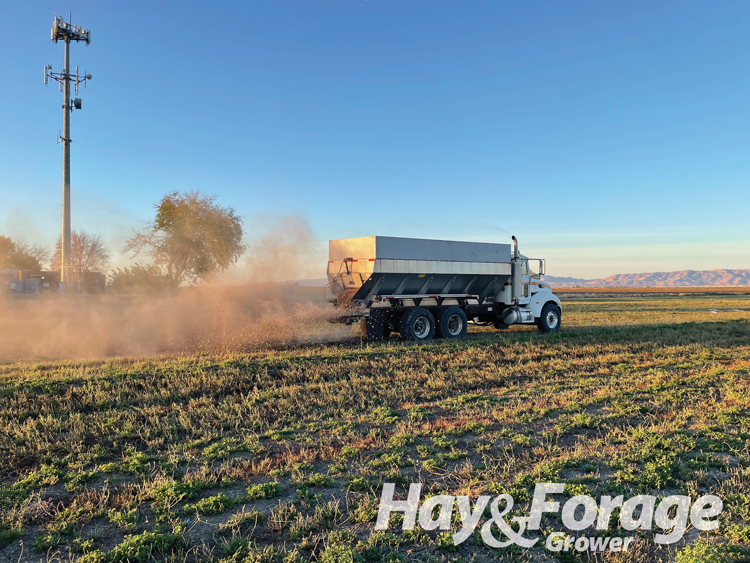
To test this hypothesis, researchers with University of California’s Cooperative Extension Service in Yolo County applied processed almond shells as a mulch to established alfalfa for two years.
Almond shells were first applied in October 2021 to 3-year-old alfalfa at varying rates between 4 to 8 tons per acre. By spring of 2022, the almond shells had mostly decomposed. Almond shells were applied to the same test plots in November 2022 at a rate of 12.5 tons per acre.
In addition to yield, test plots were evaluated for stand vigor, percent cover (bare soil, alfalfa, weeds), and weed pressure. Soil fertility and soil health measurements were also collected during this trial, including aggregate stability, compaction, soil moisture, and soil cracking. Other field treatments included gypsum applied at 2 tons per acre and an untreated control.
The almond shell mulch did not reduce stand vigor as measured by the number of alfalfa plants per square foot. Alfalfa yields were likewise not significantly reduced, though they trended lower in almond shell plots during the first spring cutting and then recovered and were slightly higher than control plots in late summer for both years of this study.
Almond shells are high in carbon and low in nitrogen, and amendments with a high C:N ratio can tie up nitrogen as they break down. Therefore, the slight reduction in spring yields might be due to the initial spring tie up of nitrogen for feeder roots as a result of the almond shell application.
For soil health metrics, almond shell applications showed benefits of reduced soil compaction in the top 3 inches of soil as well as a reduction in soil cracking, which is common in clay soils and can tear feeder roots apart in perennial crops like alfalfa.
Soil compaction, a common problem in alfalfa due to equipment traffic during multiple harvests, can lead to yield and stand loss, poor water infiltration, and reduced microbial activity. Our study showed that almond shells can help mitigate surface soil compaction once the alfalfa has been established. There were no changes to other soil health metrics like aggregate stability and bulk density after two years of this trial, nor did the almond shell mulch suppress weeds at the rates applied.
Soil fertility comparisons
With the exception of electrical conductivity (EC), which measures salinity levels in soil, other soil measurements were not significantly different by treatment. Gypsum is a highly soluble salt, and the EC was higher in the gypsum plots compared to the almond shell and control plots.
Despite the fact that other differences were not statistically significant, there were some interesting trends in soil measurements. Specifically, almond shells have about 30 pounds of potassium per ton (or 36 pounds of K20 equivalent per ton), which can eventually leach into the root zone with rain or irrigation as almond shells decompose. In this project, there was more potassium present in soils with almond shell mulch compared to gypsum or control plots.
Plots with almond shells also had more total carbon and total organic matter. Soil samples were collected in the top foot of soil where shells were applied to the soil surface. It is likely that the soil sampling depth affected
This article appeared in the April/May 2025 issue of Hay & Forage Grower on page 18-19.
Not a subscriber?Click to get the print magazine.
